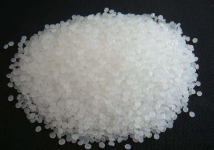read: 908 time:2025-06-25 13:35:35 from:化易天下
Why Phenols Are Acidic in Nature: A Detailed Analysis
Phenols are an important class of organic compounds that exhibit acidic behavior, a characteristic that has intrigued chemists for many years. Understanding why phenols are acidic in nature requires a deep dive into their molecular structure and the factors influencing their acidity. In this article, we will explore the reasons behind the acidic nature of phenols, focusing on the role of resonance, the effect of substituents, and the stability of the phenoxide ion.
Phenols are aromatic compounds that contain a hydroxyl group (-OH) directly bonded to a benzene ring. This structural feature is crucial in determining why phenols are acidic in nature. The presence of the hydroxyl group in conjunction with the aromatic ring creates a unique environment where the oxygen atom can easily donate a proton (H⁺), making phenol a weak acid.
One of the primary reasons why phenols are acidic in nature is the resonance stabilization of the phenoxide ion. When phenol loses a proton, it forms a phenoxide ion (C₆H₅O⁻). This ion is stabilized by resonance, where the negative charge on the oxygen atom can be delocalized over the aromatic ring. The electron-withdrawing nature of the benzene ring allows the negative charge to be spread across several atoms, reducing the overall energy of the phenoxide ion and increasing the acidity of phenol.
The hydroxyl group in phenol plays a significant role in its acidic nature. The oxygen atom in the hydroxyl group is highly electronegative, meaning it strongly attracts electrons. This electronegativity leads to a partial positive charge on the hydrogen atom, making it easier for the hydrogen to dissociate as a proton. Additionally, once the proton is lost, the resulting phenoxide ion is further stabilized through resonance, as discussed earlier.
The acidity of phenols can be significantly affected by the presence of substituents on the benzene ring. Electron-withdrawing groups (such as nitro, -NO₂) increase the acidity of phenols by further stabilizing the negative charge on the phenoxide ion. In contrast, electron-donating groups (such as methyl, -CH₃) decrease the acidity by destabilizing the phenoxide ion. This variation in acidity based on substituents provides further insight into why phenols are acidic in nature and how their acidity can be modulated.
To understand why phenols are acidic in nature in comparison to other similar compounds like alcohols, it's important to consider the absence of resonance stabilization in alcohols. Alcohols have a hydroxyl group attached to an aliphatic carbon, and when they lose a proton, the resulting alkoxide ion is not resonance-stabilized. This lack of stabilization makes alcohols significantly less acidic than phenols, highlighting the unique structural factors that contribute to the acidity of phenols.
In conclusion, why phenols are acidic in nature can be attributed to several interrelated factors, including the resonance stabilization of the phenoxide ion, the electronegativity of the hydroxyl group, and the influence of substituents on the benzene ring. Understanding these factors provides a comprehensive explanation of the acidic behavior of phenols, distinguishing them from other hydroxyl-containing compounds like alcohols. The combination of molecular structure and resonance effects makes phenols a unique and fascinating topic in organic chemistry.

Jincheng Petrochemical's 300000 ton polypropylene plant successfully trial production, 2024 polypropylene market analysis

The ABS market remains sluggish, what is the future direction?

Market differentiation of bisphenol A intensifies: prices rise in East China, while prices generally decline in other regions

The production method and process flow of silicone acrylic lotion, and what are the common raw materials